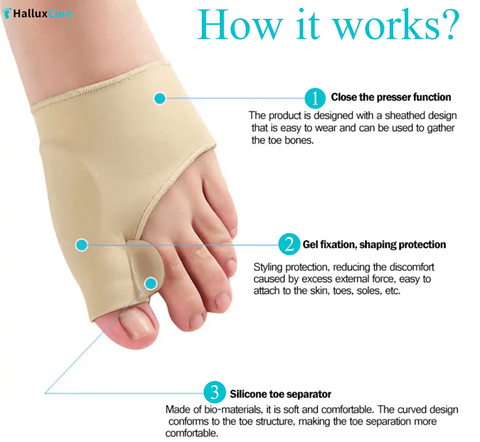Navigating Bunion Surgery: What You Need to Know
Last Updated: February 17th, 2025
Author: Dr. Emily Carter, DPM, Board-Certified Podiatrist
If you're living with bunions, you're likely familiar with the discomfort, limited mobility, and frustration they can cause. For those considering bunion surgery, the decision to proceed can feel both daunting and hopeful. In this comprehensive guide, we'll discuss what to expect, share expert advice, and provide actionable recovery tips. Whether you're weighing your options or preparing for surgery, this article offers valuable insights to help you on your journey toward pain-free living.
What Is Lapiplasty and Why Consider Surgery?
Bunion surgery, particularly a procedure called lapiplasty, is designed to correct the misalignment of the big toe joint and restore proper foot mechanics. This condition, medically referred to as hallux valgus, often worsens over time if left untreated, leading to chronic discomfort, difficulty walking, and even arthritis in the joint.
Key Considerations for Surgery
- Pain vs. Long-Term Gain: While post-operative discomfort is expected, the long-term benefit of walking pain-free is often life-changing. A patient described it as, "A few weeks or months of discomfort are worth it when you're able to walk around pain-free for the rest of your life."
- Severity Assessment: Bunions range from mild to severe. Consulting a board-certified podiatrist is essential—they will evaluate your condition through a physical exam and x-rays to determine the best course of treatment.
- When to Act: Waiting too long can exacerbate the condition, making surgery more complicated. If you're noticing worsening symptoms or have new insurance coverage that can help with medical costs, now might be the time to explore surgical options.
Post-Surgery Expectations: What to Know
Understanding the recovery process can help set realistic expectations and alleviate anxiety. Here’s what a recent patient shared about their lapiplasty journey:
The Recovery Process
- Non-Weight Bearing Phase: For the first three weeks post-surgery, you’ll likely need to avoid bearing weight on the affected foot. Mobility aids such as crutches, a knee scooter, or a walker can help navigate daily life during this phase.
- Pain Management: Pain levels vary from person to person, but commonly prescribed medications and elevation can help reduce discomfort. Some patients report that limited mobility is more frustrating than the pain itself.
- Gradual Progress: After the non-weight-bearing phase, you may transition to a walking boot before returning to normal shoes. Physical therapy is often recommended to rebuild strength and mobility.
Mental Preparation
- Long-Term Perspective: A patient emphasized the importance of focusing on the end goal, saying, "Being able to walk pain-free outweighs the temporary inconvenience of recovery."
- Considering Both Feet: If you have bunions on both feet, be prepared for a second surgery. The positive? You’ll already know what to expect the second time around.
Supporting Your Recovery Journey
While surgery addresses the root cause of bunions, complementary tools can enhance your recovery and provide ongoing support. Consider the following products to aid your healing process:
Orthopedic Bunion Pain Relief & Correction Sleeve
This medical-grade bunion sleeve is designed to provide comfort, alignment, and protection during recovery. It ensures your feet stay supported and helps reduce swelling.
4.9 ⭐⭐⭐⭐⭐ ( 1843 reviews )
Tailor’s Bunion Bunionette Pain Relief Protection Sleeves
For those with additional foot conditions like bunionettes, this product offers targeted support and protection for the outer edge of the foot.
Jamaica Black Castor Oil Soothing Oil
This versatile oil moisturizes and soothes the skin around bunions, providing relief from dryness and irritation.
Tips for a Smooth Recovery
- Plan Ahead: Arrange for mobility aids, meal prep, and a support system before your surgery date.
- Invest in Recovery Products: Use orthopedic sleeves and cushions to protect your feet during the healing process.
- Follow Your Surgeon’s Instructions: Adhere strictly to post-operative guidelines to minimize complications.
- Stay Positive: Remember, recovery is temporary, but the benefits of walking pain-free are long-lasting.
Key Takeaways
- Lapiplasty offers a modern, effective solution for bunions, correcting the root cause of the condition.
- Recovery requires patience and planning, but the results are often transformative.
- Supportive products, like orthopedic bunion sleeves, can enhance healing and provide ongoing foot care.
FAQs
1. How do I know if I need bunion surgery?
If bunions are causing persistent pain, limiting your mobility, or affecting your quality of life, it’s time to consult a podiatrist. X-rays can help determine the severity and whether surgery is the right option.
2. What are the risks of bunion surgery?
As with any surgery, there are risks, including infection, stiffness, or recurrence of the bunion. Choosing an experienced surgeon and following post-operative care instructions significantly reduces these risks.
3. How long does recovery take?
Full recovery can take 6-12 weeks, depending on the procedure and individual healing rates. Most people return to normal activities within three months.
4. Are there non-surgical treatments for bunions?
Yes, non-surgical options include wearing supportive footwear, using bunion pads or sleeves, and taking anti-inflammatory medications. However, these treatments manage symptoms and do not correct the underlying deformity.
If you’re considering bunion surgery or have already undergone the procedure, share your thoughts or questions in the comments below. Your journey can inspire and guide others facing the same decision!




